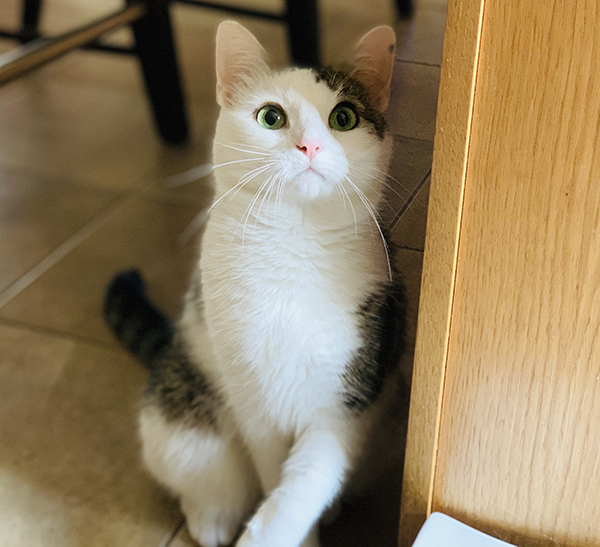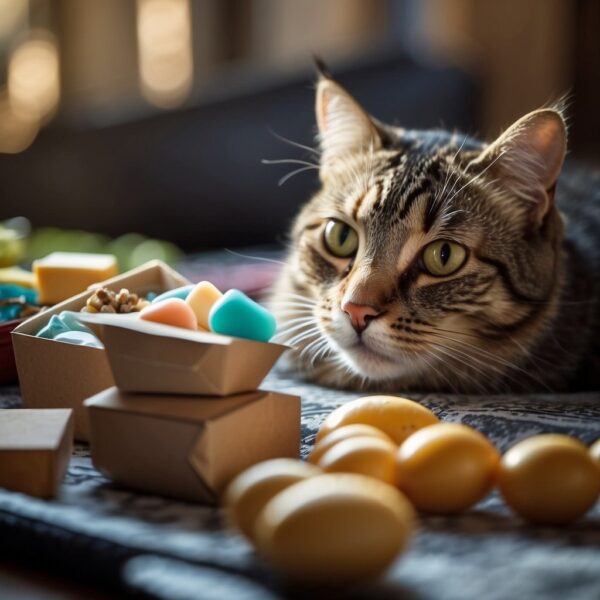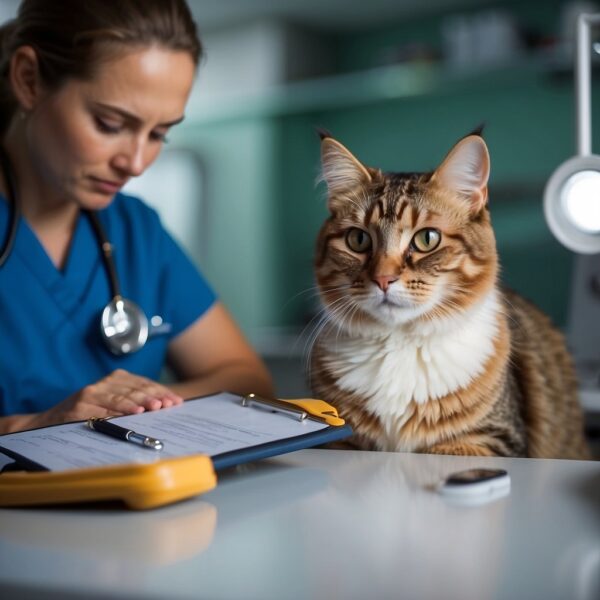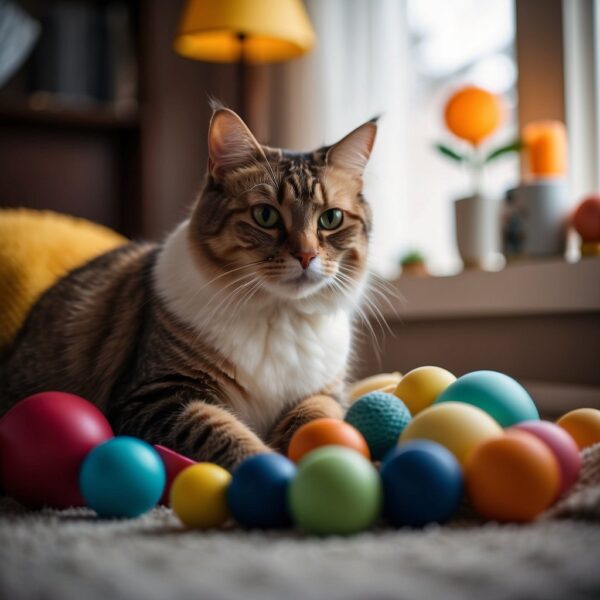
Pica in Cats: Understanding and Managing
Pica in cats is a behavioral issue characterized by the consumption of non-nutritive substances, such as plastic, fabric, or paper. This condition is more than a quirky habit; it can be a sign of underlying health issues or environmental stressors. Understanding the factors that contribute to the development of pica is crucial, as they can vary from dietary deficiencies to psychological factors, such as anxiety or boredom.
Veterinarians approach pica in cats through a comprehensive evaluation to rule out medical causes and provide appropriate treatment. This may include blood work, imaging, or an environmental and behavioral assessment. It’s important for cat parents to monitor their cats for signs of pica and seek veterinary care if the behavior arises. Early detection and intervention can prevent potential health risks associated with the ingestion of non-food items.
Key Takeaways
- Pica in cats involves the ingestion of non-food items and may signal health or environmental issues.
- Diagnosis requires a thorough veterinary evaluation to rule out medical causes and create an appropriate treatment plan.
- Prevention and home care are essential, involving regular monitoring and addressing potential stressors.

Understanding Pica in Cats
Pica in cats is a behavioral issue marked by the compulsion to chew and ingest non-food items. This section will explore various facets of pica in cats, from identifying symptoms to understanding potential risks associated with this condition.
What Is Pica?
Pica is a condition where cats are driven to eat non-food materials. Items often consumed by affected cats may include fabric, plastic, cardboard, or various household items.
Common Symptoms
Symptoms of pica in cats include:
- Chewing or licking non-food items persistently
- Vomiting, diarrhea, or constipation due to ingestion of inedible substances
Recognizing Triggers and Causes
The causes of pica can be multifaceted, including:
- Medical conditions: gastrointestinal issues or nutritional deficiencies
- Behavioral issues: stress, anxiety, or boredom
- Genetics: certain breeds may be predisposed to pica
Pica and Cat Breeds
Some cat breeds, such as Siamese, Burmese, and Tonkinese, may be more prone to pica. Genetics can play a role in the likelihood of a cat developing this condition.
The Role of Diet
Diet plays a significant role in preventing and managing pica:
- Nutritional deficiency and malnutrition may lead to pica behaviors.
- Ensuring a balanced diet can mitigate some of the urges to consume non-food items.
Behavioral Aspects
Pica can also be a compulsive behavior. Increasing playtime with toys and offering interactive toys can help reduce these compulsions.
Environmental Factors
Environmental enrichment can decrease stress-induced pica behaviors:
- Providing items like cat grass, litter boxes, cat trees, and scratching posts encourages natural behaviors and provides alternative activities.
Understanding Risks
Pica presents several health risks for cats:
- Gastrointestinal obstruction from ingested objects
- Potential toxic reactions to consumed materials It is a life-threatening condition and requires immediate veterinary attention if a blockage is suspected.

Diagnosis and Veterinary Care for cats with Pica
When a cat exhibits signs of pica, prompt veterinary consultation is imperative for a precise diagnosis and the development of an effective treatment plan.
Seeking Veterinary Advice
Veterinary intervention is critical once symptoms of pica in cats, such as repetitive ingestion of non-food items, are observed. Timely action can prevent potential gastrointestinal obstruction and address underlying medical issues.
Diagnostic Approach
A veterinarian will typically perform a comprehensive physical exam, followed by detailed history-taking to understand the cat’s environment and behavior. Diagnostic tests may include bloodwork to screen for conditions like anemia or hyperthyroidism, fecal exams for intestinal parasites, and imaging studies to rule out gastrointestinal disease.
Health Conditions Linked to Pica
Pica in cats may be associated with various medical conditions, including:
- Anemia
- Hyperthyroidism
- Gastrointestinal disease, such as inflammatory bowel disease
- Systemic illnesses like feline infectious peritonitis, leukemia, liver disease, or cancer
- Endocrine disorders, including diabetes
Identifying these underlying conditions is a crucial step in the differential diagnosis.
Treatment and Medication
The treatment plan for pica in cats may involve addressing any identified health issues, which could include:
- Medications: Antibiotics, antiparasitics, or other drugs depending on the specific condition
- Surgery: In cases of obstructive foreign bodies or tumors
- Behavior modification: Encouraging appropriate chewing behavior and environmental enrichment
- Deterrents: Applying safe substances to discourage chewing on inappropriate items
Recovery and Management
Post-treatment, recovery, and management of pica include:
- Frequent monitoring for recurrence of symptoms
- Behavioral strategies, such as increasing exercise and providing mental and physical stimulation
- Continuous veterinary check-ups to assess the cat’s health and adjust medications if necessary
Maintaining close communication with the veterinarian enhances the cat’s chances for a successful recovery.

Home Care and Prevention
Proper home care and prevention strategies play crucial roles in managing pica in cats, focusing on creating a secure environment, optimizing diet, enhancing stimulation, and diligent supervision.
Promoting a Safe Environment
Ensuring a cat’s environment is safe can prevent the ingestion of non-food items. Owners should routinely check living spaces for objects such as fabrics, paper, plastic, wool, rubber, cardboard, and wood that might appeal to a cat with pica.
Dietary Adjustments
Regular, balanced meals can reduce a cat’s impulse to ingest inappropriate items. A balanced diet that addresses any nutritional and dietary deficiencies is essential. Providing frequent, small meals may minimize a cat’s decreased appetite for their actual food due to feeling full from non-food ingestion.
Behavioral Enrichment
Behavioral enrichment such as increased playtime and various toys can minimize stress, a potential underlying cause of pica. It’s important to introduce new types of physical and mental stimulation to encourage natural behaviors and provide adequate physical exertion.
Identifying and Removing Hazards
Owners should meticulously identify and remove potential hazards that cats with pica may target. These include but are not limited to small objects and materials like wool or rubber bands that can be easily ingested.
Ongoing Monitoring and Care
Continuous observation and interaction with the cat are vital. In cases of persistent pica behavior, consulting a veterinarian is advised to rule out any underlying health issue. Cats showing symptoms like vomiting may have an underlying condition and require professional medical attention.
Regular vet visits and keen attention to any behavior changes can detect pica early, often resulting from factors like early weaning or stress, and help to implement early behavior modification strategies.

Frequently Asked Questions
Pica in cats is a behavioral issue characterized by the ingestion of non-nutritive substances. This section addresses common queries concerning the risks, treatments, symptoms, causes, prevalence, and nutritional deficiencies associated with pica in felines.
Can pica be a dangerous condition for cats?
Pica can be hazardous to cats as it may lead to gastrointestinal blockages or damage. The ingestion of inappropriate items can result in surgeries to remove obstructions or may cause nutritional imbalances.
What are the treatment options for pica in felines?
Treatment options for pica in cats include behavioral enrichment, dietary modifications, managing environmental stressors, and in some cases, medication. A veterinary consultation is crucial to determine an appropriate treatment plan.
What are the common symptoms indicating a cat may have pica?
Symptoms of pica in cats include frequent chewing or eating of materials like plastics, fabrics, or wool. Additionally, an increase in vomiting may be observed and can indicate pica when coupled with these behaviors.
What are the primary causes of pica behavior in cats?
The primary causes of pica behavior in cats range from genetic predispositions to environmental factors. It may also stem from medical issues, lack of nutrients, or behavioral problems such as anxiety or boredom.
How frequently do cats exhibit pica behavior?
The frequency of pica behavior in cats varies but is notably more common at early stages of development, around six months of age. However, not all cats will display this behavior, and some may outgrow it.
What nutritional deficiencies are linked to pica in cats?
Pica in cats has been linked to deficiencies in certain nutrients, such as fiber or minerals. It is essential to provide a balanced diet to help reduce pica behaviors related to nutritional deficits.